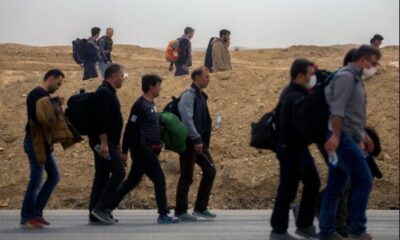Identifying someone by DNA often involves matching one sample to another that is known to come from the same person. It is possible that the United States sampled and stored Mr. al-Baghdadi’s DNA when he was imprisoned at an American-run detention center in Iraq in the mid-2000s.
”They already have a data repository,” said Kara Frederick, a fellow at the Center for a New American Security who worked as an intelligence analyst with Special Operations
But some officials said that, given the earlier state of technology at that time, it was likely that the military retained little more than biometric data such as fingerprints and facial photos.
DNA matches can also be conducted by comparing a person’s sample to that of a close relative.
Ms. Frederick noted that commando teams would supplement empirical data from biometrics and DNA with other sources of information, such as interviews with survivors of a raid. Mr. Trump said on Sunday that the American forces had taken eleven children found at the compound into custody. Intelligence analysis would also study other evidence on the site, including any hard drives and cellphones that might point to the occupants’ identity.
“The bottom line here is there is just a confluence of information that it takes to get to yes. It’s not just DNA or biometrics as the sole determining factor,” said Ms. Frederick, who served three tours in Afghanistan.
Mr. Kaye said there was nothing particularly surprising about how quickly Mr. al-Baghdadi was identified. Even if American forces in the region lack the latest portable kits, older laboratory DNA tests now take only about eight hours to produce a reliable sample.
“It’s probably right, is the bottom line,” he said.
Heather Murphy contributed reporting.

 Entertainment6 days ago
Entertainment6 days ago
 Tech3 days ago
Tech3 days ago
 Tech3 days ago
Tech3 days ago
 General News11 hours ago
General News11 hours ago
 General News7 hours ago
General News7 hours ago




